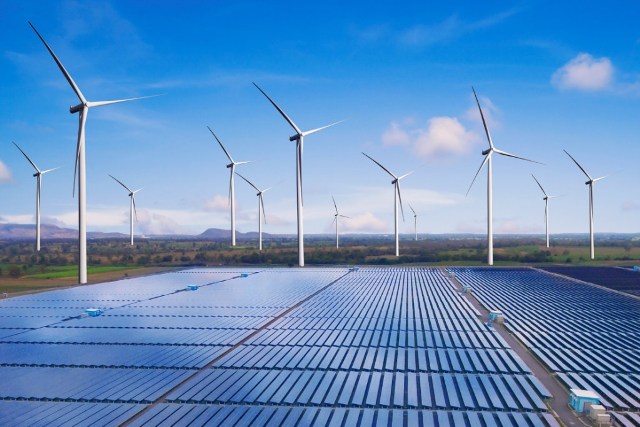China’s record-setting achievement in April 2025 — when wind and solar together generated 26 percent of its electricity — marks a critical inflection point in the global clean energy transition. While the figures from Ember reveal a technical and logistical success, they also underscore the challenges ahead for China and the world in turning clean energy momentum into long-term decarbonization.
A Breakneck Pace, a Fragile Balance
The rapid growth of China’s renewable sector, especially solar, is nothing short of staggering. Solar generation has more than doubled in just two years and tripled in five, now contributing 12.4 percent of total electricity — a massive leap from 4.1 percent in 2020. With 333 GW of new solar capacity added in 2024 alone, more than the rest of the world combined, China has positioned itself as the epicenter of the solar boom.
Yet this transformation is occurring within a narrow seasonal window. The peak shares in March and April reflect not just increasing capacity but also a confluence of favorable weather and reduced energy demand—factors that may not hold throughout the year. This highlights the fragility of renewable reliability in the absence of major upgrades in energy storage and grid flexibility.
Fossil Fuels on the Back Foot—But Not Gone
The 3.6 percent year-on-year drop in fossil fuel generation in early 2025 is a notable structural shift. For years, China has simultaneously expanded renewables while continuing to build coal infrastructure as a “reliability cushion.” The latest numbers suggest that cushion may finally be loosening.
However, to declare a definitive pivot away from coal would be premature. A seasonal or economic dip in fossil fuel use does not yet amount to a permanent transition. China’s energy system remains structurally reliant on coal, particularly during peak summer and winter months. The challenge is to ensure that clean energy does more than just meet incremental demand growth—it must replace existing fossil generation at scale.
Systemic Reforms: The Real Bottleneck
As Biqing Yang of Ember points out, the key to sustaining progress lies beyond installing panels and turbines. China’s power system reform — especially modernizing its grids, pricing mechanisms, and dispatch systems — lags behind its physical deployment of renewables. Without these reforms, the growing share of variable renewables could risk grid instability and curtailment.
Moreover, decarbonization in end-use sectors — such as heavy industry, transport, and residential heating—remains nascent. Clean electricity must extend its reach into these hard-to-abate sectors, requiring not only infrastructure but also regulatory clarity and economic incentives.
A Global Implication: Hope Amid Crisis
China’s progress comes against the backdrop of a global climate emergency, with 2024 recorded as the hottest year in history, breaching the 1.5°C threshold. This makes China’s role even more consequential. As the world’s largest emitter and energy consumer, its energy choices will shape whether global climate targets remain viable.
The April 2025 milestone is a symbol of potential — proof that a clean energy future is technically achievable. But it also serves as a warning: without systemic reforms and international cooperation, capacity growth alone won’t deliver deep decarbonization.
Conclusion
China’s record share of wind and solar electricity is more than just a national achievement — it’s a bellwether for the global energy transition. The pace of growth is encouraging, but sustaining and integrating this progress will demand bold policy, institutional innovation, and technological breakthroughs. The next few years will determine whether this momentum can be transformed into a permanent, scalable path to net zero.

